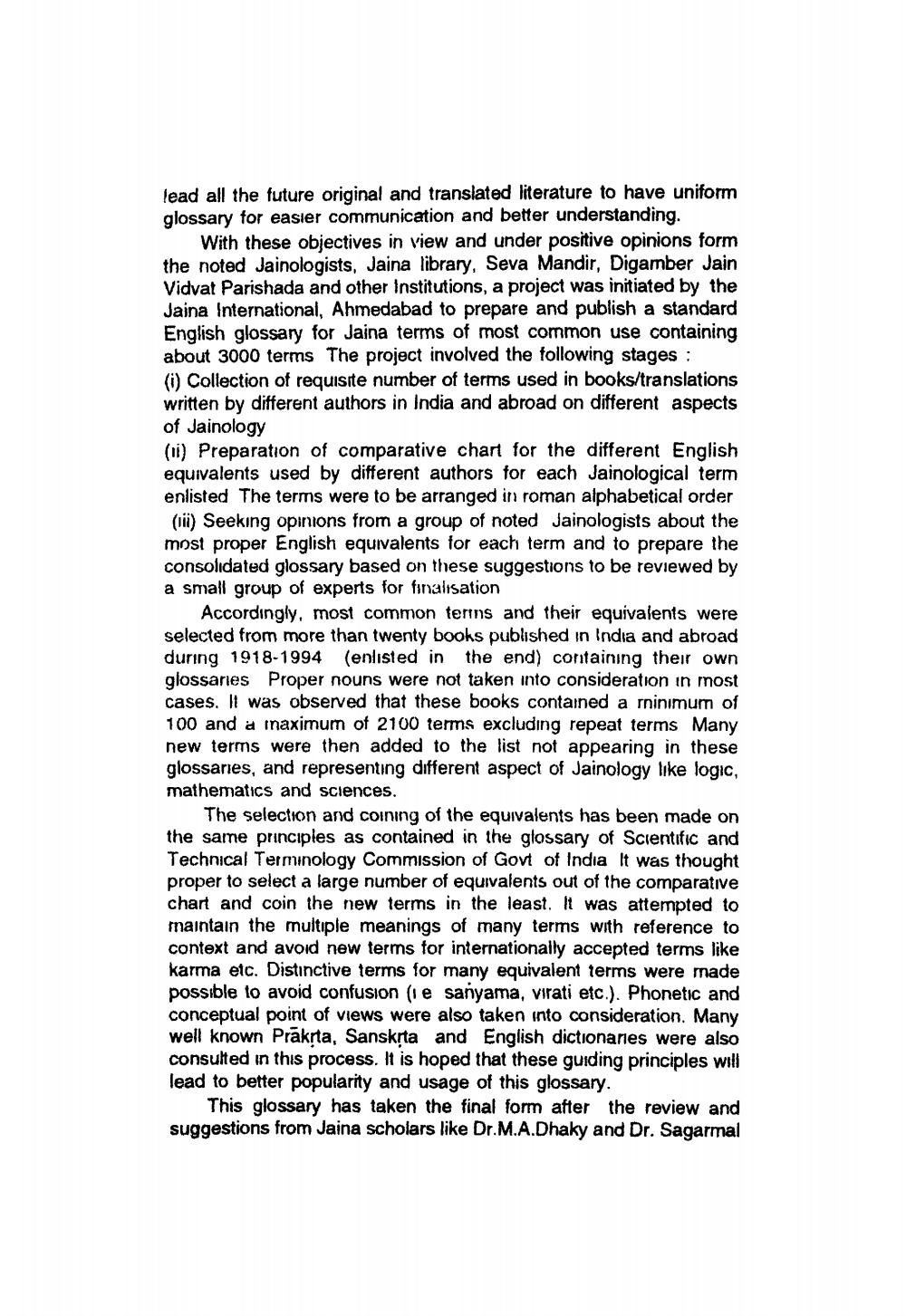________________
lead all the future original and translated literature to have uniform glossary for easier communication and better understanding.
With these objectives in view and under positive opinions form the noted Jainologists, Jaina library, Seva Mandir, Digamber Jain Vidvat Parishada and other Institutions, a project was initiated by the Jaina International, Ahmedabad to prepare and publish a standard English glossary for Jaina terms of most common use containing about 3000 terms The project involved the following stages: (i) Collection of requisite number of terms used in books/translations written by different authors in India and abroad on different aspects of Jainology
(i) Preparation of comparative chart for the different English equivalents used by different authors for each Jainological term enlisted The terms were to be arranged in roman alphabetical order (iii) Seeking opinions from a group of noted Jainologists about the most proper English equivalents for each term and to prepare the consolidated glossary based on these suggestions to be reviewed by a small group of experts for finalisation
Accordingly, most common terms and their equivalents were selected from more than twenty books published in India and abroad during 1918-1994 (enlisted in the end) containing their own glossaries Proper nouns were not taken into consideration in most cases. It was observed that these books contained a rninimum of 100 and a maximum of 2100 terms excluding repeat terms Many new terms were then added to the list not appearing in these glossaries, and representing different aspect of Jainology like logic, mathematics and sciences.
The selection and coining of the equivalents has been made on the same principles as contained in the glossary of Scientific and Technical Terminology Commission of Govt of India It was thought proper to select a large number of equivalents out of the comparative chart and coin the new terms in the least. It was attempted to maintain the multiple meanings of many terms with reference to context and avoid new terms for internationally accepted terms like karma etc. Distinctive terms for many equivalent terms were made possible to avoid confusion (ie sanyama, virati etc.). Phonetic and conceptual point of views were also taken into consideration. Many well known Prākṛta, Sanskṛta and English dictionaries were also consulted in this process. It is hoped that these guiding principles will lead to better popularity and usage of this glossary.
This glossary has taken the final form after the review and suggestions from Jaina scholars like Dr.M.A.Dhaky and Dr. Sagarmal




